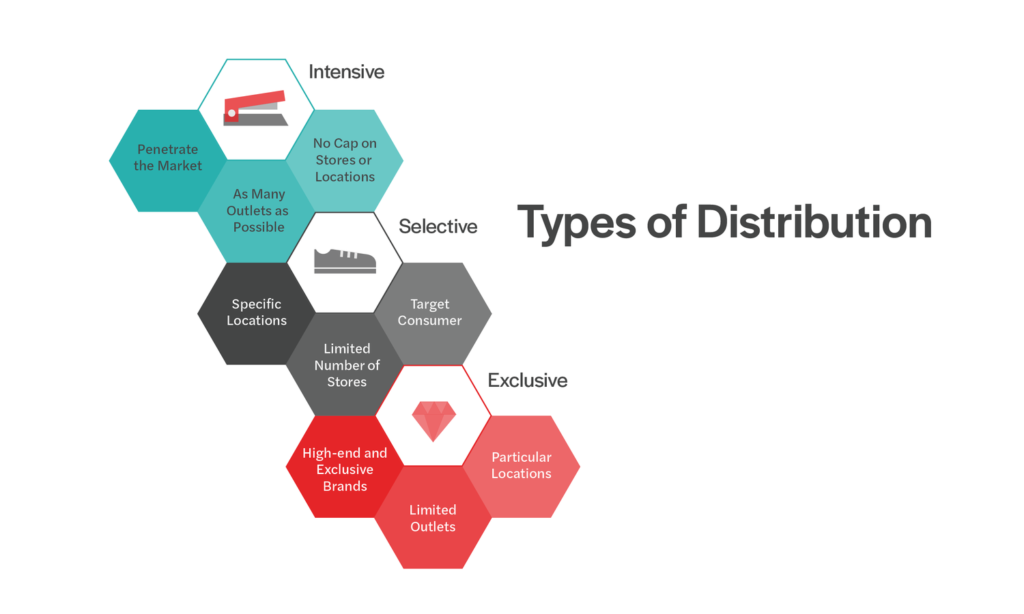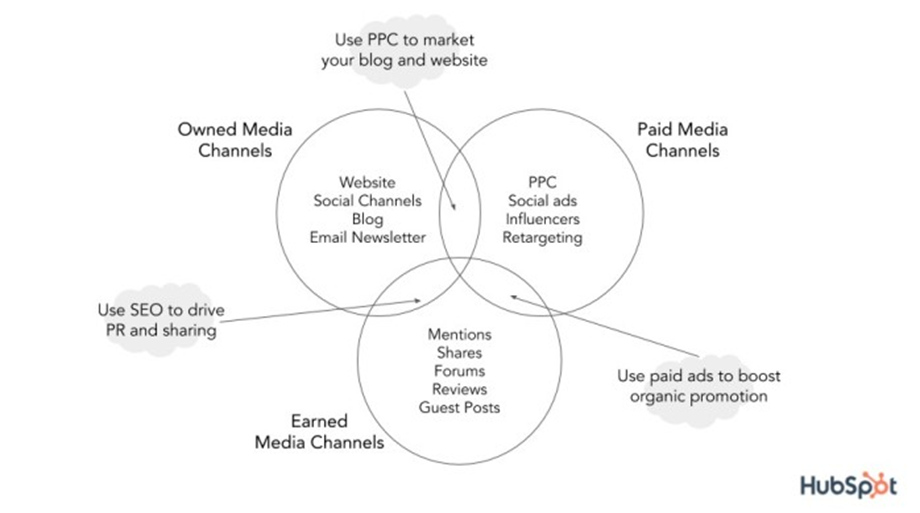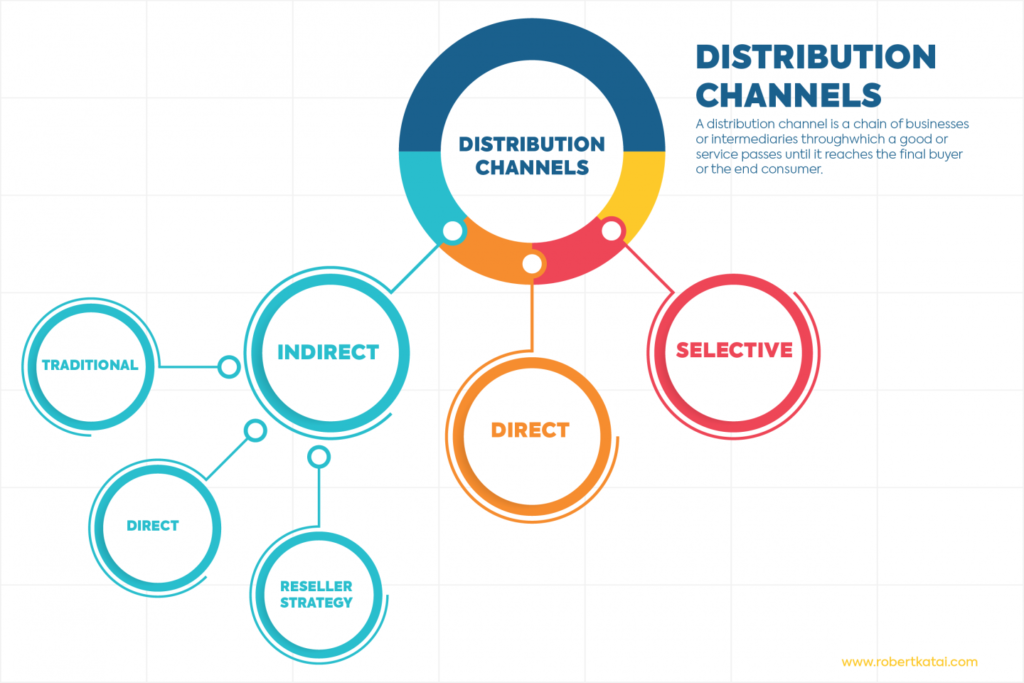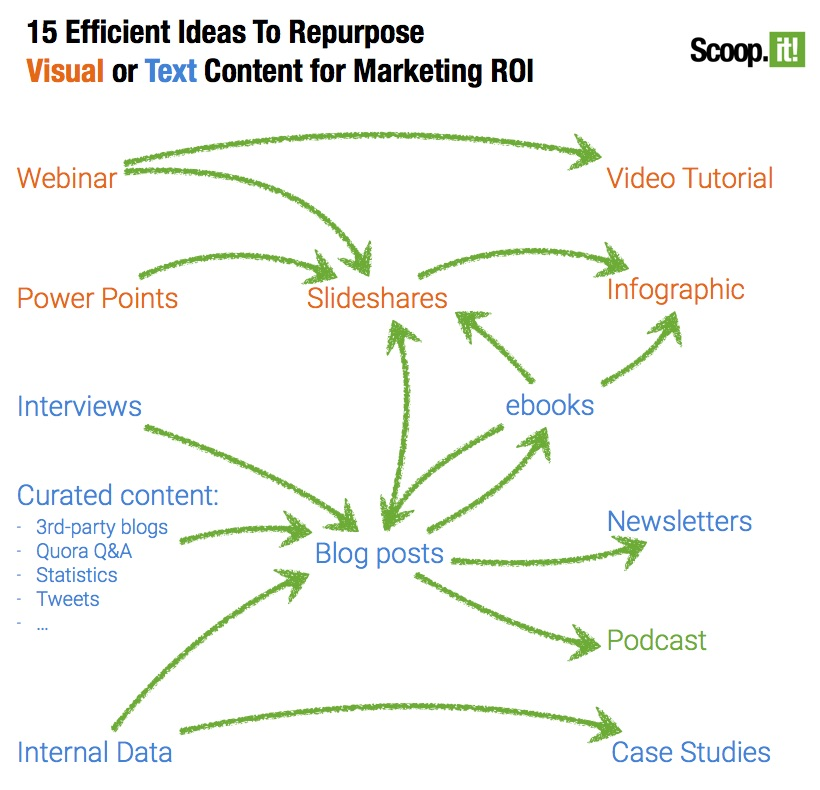Content Distribution Guide: Top Strategies for Marketers

Table Of Contents
- What is Content Distribution?
- Content Marketing Distribution Methods
- Purpose of a Content Distribution Strategy
- Content Distribution Strategies for Marketers
- Key Takeaways
- Conclusion
- FAQs
“People don’t find content by mistake, or by accident. Every content plan needs a complementary promotion plan that combines paid, owned, and earned media.”
- Matthew Gratt, Director of Growth at Bestow Inc.
After developing a piece of content, the next step is to distribute it. The process of sharing, publishing, and marketing your material is known as content distribution. It is the method through which you distribute your content to your audience for consumption via multiple channels and media types.
The content distribution also refers to the use of owned, paid, and earned media to increase the reach of your digital content. It is a component of the marketing distribution strategy for content promotion and amplification across several media forms and channels.
What is Content Distribution?
Content distribution is a concept that is frequently bandied about in marketing circles without any clear parameters attached. It may imply a variety of things, so it’s critical to understand all of the options before including it as a line item in your budget – especially because distribution has become increasingly vital to the success of your content. With so much noise in the content marketing industry, even high-quality material risks being lost in the shuffle. Today, social media plays a significant part in content distribution. Let’s take a moment to examine what this implies.
The practice of sharing, publishing, and marketing material on multiple social media platforms is known as social media content distribution. This material may have been generated specifically for that medium, or it may have been re-formatted and utilized on social media.
Regardless of the form of content distribution you choose, the process of distribution will begin when you generate your content. However, before you put pen to paper, you need to plan where and how you’re going to publish and promote your material. Otherwise, your time and resources may be squandered.
Consider the following content distribution statistics:
- Every day, 60% of marketers publish one piece of content
- Every second, 952 posts are published on Instagram
- Every second, 8,726 tweets are submitted on Twitter
- Google responds to 3.8 million search inquiries every minute
As you can see, in recent years, there has been a significant explosion of material, which has been greeted with declining demand. There’s just so much stuff we can digest with about 4.5 million blog entries written every day. According to marketing guru Mark Schaefer, content marketing may not be a viable approach for every organization, due to ‘content shock.’
Content Marketing Distribution Methods
Distribution tactics vary according to the sort of goods sold. The difficulty is determining what form of distribution you will require to meet your development objectives. There are three distribution strategies that define how producers select the manner in which their items are distributed in the market.

- Intensive distribution: This entails having as many outlets as possible. The purpose of intense distribution is to reach as many people as possible.
- Selective distribution: This is frequently focused on a specific product and its fit inside a store. This enables producers to select a pricing point that targets a certain group of consumers, resulting in a more tailored purchasing experience. The number of sites in a given area is limited by selective distribution.
- Exclusive distribution: Only a few outlets are available. This might range from exclusive premium brands to limited-edition collections accessible only in specific locations or businesses. This strategy aids in the preservation of a brand’s image and product uniqueness. High-end designers like Chanel, as well as car businesses such as Ferrari, are examples of corporations that use exclusive distribution.

Purpose of a Content Distribution Strategy
The secret to success is great content that appeals to your clients. However, marketers frequently overlook the necessity of sharing and marketing their content—after all, your target audience will not stumble across your information by chance. And, in order for your material to be effective, it must be delivered to your intended audience. A content distribution plan will assist you in successfully distributing your marketing material. Your content distribution strategy is your plan for promoting your material to your target audience through various marketing channels.
After you’ve developed a plan, select the channels via which you intend to disseminate your information successfully. Content distribution channels, according to HubSpot, are the channels through which you distribute and market the content you generate. The methods by which you distribute your material will vary based on your audience and the resources available to you.
The ways of promoting material to internet audiences in many media types via various channels are known as content distribution. The majority of distribution channels may be classified into three types: owned, earned, and paid.
- Owned material distribution means that you will be distributing content to your own online assets, such as your blog, email newsletter, social network, or microsite.
- Earned content distribution occurs when third parties spread your material or content about you via press coverage, guest article contributions, retweets or shares, or product evaluations.
- Paid content distribution requires you to pay for content distribution expressly. Payment can take various forms, but it is most commonly based on a cost-per-click (CPC) model in which the owner of the content pays a certain amount each time someone clicks to read the information. The diagram below explains how the 3 interact and interplay with one another.

A content distribution plan is a strategic document developed by a company to guide its marketing efforts for promoting blog posts, eBooks, resources, and other content assets.
There are several reasons to develop a content distribution strategy. A document like this eliminates the unpredictability of the promotion process and offers structure to it.
A well-thought-out content distribution strategy streamlines the process of reaching the appropriate audience at the right time and persuading them to take the required action on your content asset, whether that’s downloading an eBook, signing up for a newsletter, or scheduling a demo on your website.
Content Distribution Strategies for Marketers
The following are some top content distribution tips, especially for marketers:
Research your intended audience
The goal of content distribution is to get your material in front of your target audience – not just any audience. You won’t be able to accomplish this successfully unless you know where they are and what they prefer to read. Before you begin developing your plan, conduct research on your target audience to determine who will be reading your material.
Begin by gathering demographic information from website visitors, email subscribers, social media followers, and customers. Examine your target audience’s gender, age, income, geography, education, and other demographics. This data may be obtained through Google Analytics or your social media analytics tools.
Next, solicit direct input from your customers, email subscribers, and social media followers. Inquire about their pain areas and needs, as well as their opinions on your present content and distribution initiatives.
Examine your content and select your content distribution routes

You could already have some published material, such as blog entries, videos, social networking content, and so on. While your new content distribution plan does not call for the removal of such material, you should conduct an audit to see whether it is assisting or hindering your distribution efforts. Auditing your present material will also remind you of the topics you’ve already covered and which you may expand on.
A complete content audit includes keeping track of your material. You may log your material manually or with a tool. Screaming Frog and similar tools may assist you with crawling and collecting your material, listing each URL, title, and description in a spreadsheet. The free version allows you to crawl up to 500 URLs. If you want to do a manual content audit, follow the methods outlined in this blog article. Considering the effect of your material. When you crawl your material using SEMRush, the tool will also provide the length of the article, social shares, and backlinks.
This data may assist you in determining the effect of each piece of material, alerting you to anything that needs to be updated, rewritten, or deleted, thereby, helping you identify the holes in your material. You may also use the Ahrefs Material Gap tool or undertake keyword research to uncover additional keywords or keyword phrases to add to your content, allowing it to rank higher and for more terms.
Choose your content type
This stage occurs before content development and after target audience research since your content distribution methods are perhaps more significant than your content itself. You’ll have a much better notion of how to get your content in front of your followers and buyers once you’ve identified your target demographic.
Depending on your research, you may publish on forums and communities such as Reddit or Quora and you may even pay to promote your material on such sites. Alternatively, you may want to publish information solely through social media platforms, or you may discover that conventional PR is your best option. Whatever content distribution platforms you pick, be sure they are compatible with your target audience’s interests
Set your KPIs and targets for content distribution
After you’ve decided on your distribution channels, think about what kinds of content you’d like to develop (and have the means to do so). Many businesses prefer to publish all of their material on their blog, then reuse and republish it elsewhere. Blog entries are globally consumed, simple to reuse and localize (convert into other languages), and easy to distribute – not to mention that many customers read a company’s blog before making a purchase decision.
For these reasons, we propose that you start with a business blog and gradually broaden your content types to distribute on additional networks.
Set achievable goals
Goals let us see where we’re heading and what success will look like after we’ve arrived. Using these measurements, create specific, measurable, achievable, realistic, time-based (SMART) goals for your content. Here’s an example:
- Specific: I want to enhance backlinks from other trustworthy websites in order to generate organic traffic to our blog. This improves the search engine ranking, resulting in more organic visitors.
- Measurable: I’d like to get 30 fresh backlinks for our blog.
- Achievable: We already generate 10 new backlinks each month without a deliberate approach, thus I feel 30 new backlinks this month using our method is doable.
- Relevant: This aim is in line with our overall organic content marketing approach, and it has the potential to improve our earned media as we receive mentions from news sources and third-party bloggers.
- Time-Based: I’d like to obtain these backlinks within the following month.
Create an editorial calendar (and include distribution)
To be effective, content marketing and distribution strategy require extensive preparation. An editorial content calendar might be useful in this situation. You may make one in Excel, Google Sheets, or Google Calendar. CoSchedule, Asana, and Trello are other useful tools.
Make your content follow a schedule
Your editorial schedule, like your content distribution plan, assists your team in staying on track and working toward specific objectives. It also provides a goal for your writers and editors to work on in the next weeks and months. Here’s an example of an editorial schedule (using this post as an example):
Your editorial calendar is the ideal area to document your content distribution strategy and objectives.

Make your material available to the public and advertise it
It’s time to develop content when you’ve researched your audience, audited your material, decided on your distribution channels and content categories, and created your editorial schedule.
Check out these tools as you work on your new content:
- AnswerthePublic, which may assist you in fleshing out themes and understanding what your target audience is looking for.
- Canva, which may assist you in creating stunning infographics and illustrations.
- Anchor, a free podcasting tool for novices, Vidyard, a video hosting and publishing network designed for marketers
In the next section, we’ll go through content distribution tools in further detail.
Building a Content Distribution Framework
You’ve developed your marketing content now it’s time to share it with the rest of the world. Publish and advertise your material in accordance with your editorial calendar and distribution channels of choice. As with any marketing channel, make sure you follow the principles for optimizing your postings on each one.
It is not enough to simply have a content production process in place; it is also necessary to build a process that will allow you to smoothly share your material with your audience. A content distribution framework will assist you in automating the content distribution process. Here’s how to create a content distribution architecture that will improve the content experience you offer:
Step 1: Understand your audience
If you have a content strategy in place, you have already defined your target audience and built buyer personas to characterize the many sorts of people who would be interested in your content. This is the initial phase. Identify typical audience qualities such as content consumption preferences, goals, pain spots, and so on when working on the content development strategy.
Step 2: Evaluate your distribution options
Examine the owned, paid, and earned media outlets and make a decision that best meets your demands and the needs of your audience. Do you have a separate budget for promoting your content in addition to running advertisements to encourage sales? If this is the case, determine which platforms will provide you with the most return on investment (ROI).
Influencer marketing, for example, will produce better outcomes than SEM for a B2C business. Allow data to be your guide. If you don’t have a large enough budget to market your content via bought media, look for strategies to optimize your influence via owned and earned media. You may need to devote considerable effort to promote your information on third-party websites such as social media, Quora, Reddit, and industry-specific forums.
Step 3: Create a distribution plan
Once you’ve discovered the various channels, record them and develop a content distribution plan to follow each time you publish new material. The structure should alter depending on the type of material. For example, you would not use the same ad budget to promote a 700-word post as you would a 10,000-word piece of gated material. Take your time and create a plan for each sort of content’s dissemination. Remember the saying, “The shortest pencil is longer than the longest memory.”
For example, here’s how Buffer distributes its blog posts across several social media networks. Buffer’s social media marketing strategy, which includes Twitter, Facebook, Google+, and LinkedIn.
Step 4: Master the art of repurposing

Increase the reach of your current content by repurposing it. The goal of repurposing material is to produce more content in less time. Have you ever written an eBook? Make it into several blog pieces and infographics. If you’ve made an infographic that’s done extraordinarily well, consider turning it into a short film. The possibilities are numerous and varied.
Another advantage of repurposing your material is that you’ll have content in many formats that will function well across several media. For example, if you publish a link to your blog on Facebook, the post’s reach will be limited. Instead, pick a piece of practical advice from the text, turn it into an image/video, and share the link with it. Because Facebook’s algorithm prefers visual material, the reach will be significantly larger.
Step 5: Rinse and re-rinse
Your content distribution approach should not be rigid. Keep an eye on your data and adjust your plan based on how each channel performs. You may create many guest pieces for various outlets, but if some of them aren’t bringing you traffic, stop writing for them. The same is true for social media and paid media – if your advertising on LinkedIn is outperforming those on Facebook, spend more money on LinkedIn.
Key Takeaways
In this blog, you have learned the following about content distribution:
- A content distribution strategy is your action plan for promoting your content via various marketing channels.
- A content distribution plan is a strategic document developed by a company to guide its marketing efforts for promoting blog posts, eBooks, resources, and other content assets.
- The three distribution strategies are intensive distribution, exclusive distribution, and selective distribution.
- Develop content when you’ve researched your audience, audited your material, decided on your distribution channels and content categories, and created your editorial schedule.
- Increase the reach of your current content by repurposing it. The advantage of repurposing your material is that you’ll have content in many formats that will function well across several media.
Conclusion
In short, this blog captures and emphasizes the need for content distribution.
A content distribution strategy will guide you when a new piece of content is ready for distribution. Rather than spreading it everywhere and expecting no effect, selectively distributing your material will provide significant returns.
FAQs
1. Research
2. Audit
3. Identify content distribution channels
4. Finalize content types
5. Set KPIs and goals
6. Create an editorial calendar
7. Build your content
8. Distribute and market
1. Build your email subscriber base
2. Syndicate content
3. Answer questions on Q&A sites
4. Publish blogs
5. Use social media channels
6. Optimize content for SEO
7. Go live on social media
Content amplification involves ‘amplifying’ your content reach to a larger audience. Eventually, the goal is to encourage your audience to move seamlessly through the sales funnel.
1. Websites/blogs
2. Guest blogging
3. E-newsletters
4. Ebooks
5. Infographics
6. Social media groups
7. Videos
8. Press release
Content distribution strategy is your action plan for promoting your content online. Once you come up with the strategy, choose the channels to distribute your content effectively to your target audience.
Latest Blogs
Explore how Google’s 2025 AI search updates triggered ranking chaos. Learn actionable strategies to adapt your SEO for AI Overviews, zero-click searches, and SERP volatility. Stay ahead now.
Learn how to rank on AI search engines like ChatGPT, Perplexity, and Gemini by optimizing your content for authority, structure, and relevance. Stay ahead in AI-driven search with this strategic guide.
Explore the best healthcare SEO services for your medical practice. Improve online visibility and effectively reach more patients in need of your services.


